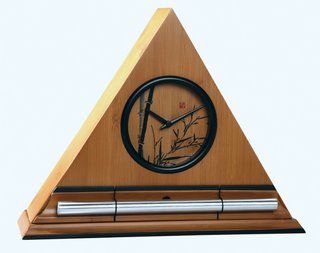Sometimes it’s hard to see that yoga is far more than a physical activity confined by time, space, and a mat. Too often we rush to class to secure a spot on the studio floor and begin our practice without taking note of our surroundings. We may compare our poses with those of others; we can get distracted by people wandering in and out of class or maneuvering for elbow room.
By getting out of the studio and into nature, you can experience yoga as it was originally intended. “Being outdoors gives you access to a whole other world of sensations. It helps you feel part of a boundless existence, at one with an intelligent and sympathetic universe,” says Garrett Sarley Dinabandhu, president of the Kripalu Center for Yoga and Health in Massachusetts’s Berkshire Mountains. The pure unpredictability of being outside and exposed to the elements can strengthen an existing practice or inspire a new one, Dinabandhu says.
Working with Michelle Van Otten, owner of Ultimate Outdoor Fitness in Los Gatos, California, and E. Barrie Kavasch, an expert in Native American wisdom and author of “The Medicine Wheel Garden,” we’ve developed a unique yoga-based routine that’s meant to be an out-of-studio experience.
This Four Elements Ritual — Earth, Wind, Fire, and Water — is designed to awaken your senses, enhance your focus, and help you reconnect to the natural world.
Tips for Outdoor Practice
To refresh your experience when you go outside, keep these four points in mind.
Find Your Place of Peace and Power
Everybody has access to some spot of natural power. It doesn’t have to be the Grand Canyon; it can be Central Park, a river, a stream, a hillside. Maybe it’s a place made special by its juxtaposition to what’s around it — an old oak tree next to a housing development or a water fountain in the middle of a city. If you open yourself to it, you can find lots of what Dinabandhu calls “little doorways into the natural rhythms of nature.”
Be Present
To most people, the outdoors is a transitional place — something they rush through on their way from one indoor environment to another; they’re not fully conscious of the world itself. The rewards of being present in nature are very fulfilling — but it’s an awareness you have to cultivate.
Start with Your Breath
Do a few ujjayi breaths to relax and slow down. Breathe slowly through your nose, allowing your belly to expand; slightly contract the back of the throat as you inhale and exhale to create the audible sound of an ujjayi breath, like ocean waves rushing over pebbles. Listen for the gentle rhythms of nature and allow your breath to fall in sync with it. With each breath, reach your sensory awareness toward your inner self and out into the world around you.
Go Slow and Slower
When you practice yoga outside, it’s not about how many asanas you do, but the quality of movement that enriches your practice. Think of moving from the inside out, following your body’s natural inclination and rhythms. Feel the currents of the air across your body and let that direct you. Enjoy the flow of one pose into another. Take your time.
adapted from Whole Living Magazine, July/August 2005 by Terri Trespicio
Use our unique “Zen Clock” which functions as a Yoga Timer. It features a long-resonating acoustic chime that brings your meditation or yoga session to a gradual close, preserving the environment of stillness while also acting as an effective time signal. Our Yoga Timer & Clock can be programmed to chime at the end of the meditation or yoga session or periodically throughout the session as a kind of sonic yantra. The beauty and functionality of the Zen Clock/Timer makes it a meditation tool that can actually help you “make time” for meditation in your life. Bring yourself back to balance.

Bamboo Zen Alarm Clock with Chime, yoga timers from Boulder, CO
Now & Zen – The Yoga Timer Store
1638 Pearl Street
Boulder, CO 80302
(800) 779-6383